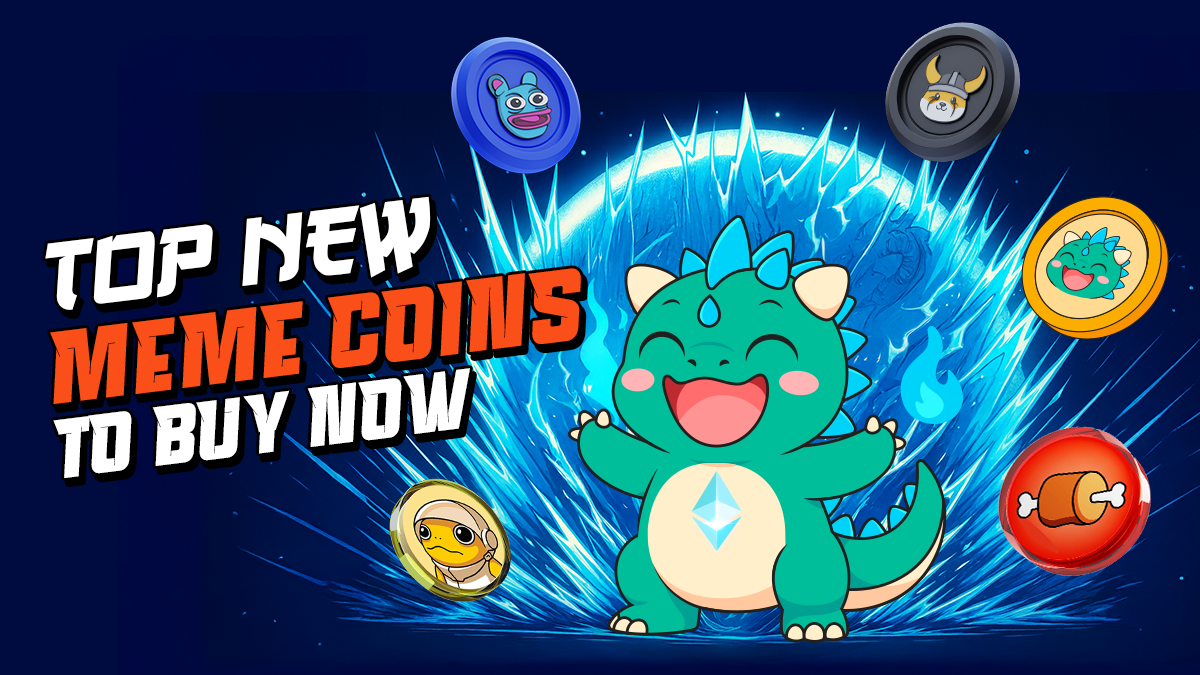Pepe may have started as a meme, but in the current crypto world, it represents something far larger-a cultural signal that humor, virality, and community can fuel real financial ecosystems. The evolution of Pepe and other meme-based assets has proven that what begins as internet folklore can quickly transform into billion-dollar movements. These projects are redefining how investors perceive value, merging entertainment with economics in ways traditional markets could never imagine.
As the crypto industry heads deeper into 2025, meme coins are no longer dismissed as fleeting trends. They’ve become strategic instruments of speculation and community building. The data behind the next 1000X meme coin models shows that sentiment and structure now go hand in hand. From advanced staking rewards to innovative presale systems, the next generation of meme tokens is blending hype with hard mechanics.
1. BullZilla: The Structured Presale with Explosive ROI
BullZilla currently sits in Stage 6 (Going Full Send!), Phase 4, with a current price of $0.00015907. Over the course of the presale, it has raised more than $900,000, attracted over 3,000 token holders, and sold more than 31 billion BZIL tokens, signaling strong community traction and growing investor confidence.
From Stage 6D to the projected listing price of $0.00527, the ROI stands at an impressive 3,213.89%, while the earliest joiners have already secured around 2,666.43% ROI. A $1,000 investment at this stage nets approximately 6.286 million BZIL tokens. In the next phase, Stage 7A, the price is expected to increase by 4.18%, moving from $0.00015907 to $0.00016573.
What makes BullZilla compelling beyond these numbers is its presale structure. Its Progressive Price Engine automatically raises the price every time $100,000 is raised or after 48 hours, whichever comes first. That mechanism forces momentum and discourages waiting.
From a next 1000X meme coin lens, BullZilla’s combination of engineered scarcity, referral incentives, and presale stage mechanics is rare. Many meme coins simply rely on social hype; BullZilla layers structure on top. As the market enters altseason, investors will increasingly seek projects with definable paths to upside.
2. Pepe: The OG Meme King Riding Momentum
Pepe has long lived in meme coin lore. It leans heavily on community, viral traction, and social sentiment. From a price prediction vantage, Pepe often behaves like a sentiment barometer: when meme fever returns, it tends to lead.
Its tokenomics are less radical than BullZilla’s – lower staking yields, fewer engineered burns, and reliance on liquidity and exchange support. But that simplicity gives it a kind of durability when hype returns. It attracts traders who want to ride the meme wave without taking on extreme presale risk. In cycles past, Pepe’s big moves have sometimes foreshadowed broader alt momentum.
The next 1000X meme coin case for Pepe is conservative: it probably won’t 10× overnight like new presales might, but it holds upside when the meme sector reignites.
3. MoonBull (MOBU): The Staking Revolution That Rewards Conviction
MoonBull is positioning itself as more than just meme flair. It combines humor with strong DeFi mechanics. Built on Ethereum, MoonBull deploys reflections, auto-liquidity, and a 23-stage scarcity model. It offers 95 % APY staking, instant referral bonuses, and fully locked liquidity.
Furthermore, it is planning cross-chain staking and uses an AI-based staking optimizer to dynamically adjust reward allocation to sustain yields even in volatile phases. (Project whiteboard) . From a next 1000X meme coin framework, MoonBull’s integrated staking and scarcity layers give it more structural support than meme coins that only rely on hype.
4. La Culex (CULEX): Meme Power Meets Sustainable Tokenomics
La Culex is an upcoming presale that blends meme energy with sustainable design. It has a 200 billion token supply with allocations of 45 % to presale, 15 % to staking rewards, 20 % to liquidity (locked for 18 months), and 2 billion tokens reserved for burn mechanics. Presale runs in 32 stages, pushing the token toward a listing target of $0.007.
Its community incentives include 80 % APY staking through the “Hive Vault” and a 12 % referral system via the Bite Chain. The project also promotes a 0/0 transaction tax, audited contracts, and locked liquidity as safety signals.
5. Pudgy Penguins (PENGU): Viral Culture with Community Clout
Pudgy Penguins (PENGU) has transitioned from NFT-based culture into the meme coin space, leveraging strong community loyalty and viral appeal. Its ecosystem emphasizes staking rewards, governance voting, and NFT collaborations, giving holders active participation in shaping the project.
PENGU’s brand recognition in both NFTs and social media adds stability to its viral potential. Investors see it as a meme token with structural upside, making it a strong candidate among the next 1000X meme coins.
6. Official Trump (TRUMP): The Political Meme Engine
Official Trump (TRUMP) capitalizes on pop culture and political virality. The token’s strength comes from social campaigns, influencer endorsements, and gamified incentives.
TRUMP’s ecosystem includes staking bonuses, community challenges, and referral rewards, which provide both financial incentives and social engagement. Its niche positioning makes it a unique entry in the meme coin space, attracting both collectors and speculators looking for viral-driven upside.
7. Bonk (BONK): The High-Energy Meme Play
Bonk (BONK) epitomizes fast-moving, community-driven meme tokens. It thrives on social media momentum, viral campaigns, and grassroots adoption.
While BONK doesn’t have the structured presale mechanics of BullZilla, it leverages community virality, NFT airdrops, and playful branding to generate market attention. Investors who embrace higher risk can view BONK as a speculative opportunity with outsized short-term potential.
Conclusion:
Pepe may have been the pioneer, but the meme coin revolution has far surpassed its origins. The market is now driven by projects that merge creativity, community power, and structured economics. As investors analyze the next 1000X meme coin opportunities for 2025, tokens like BullZilla, Pudgy Penguins, Official Trump, Bonk, La Culex, and PNUT each showcase a different approach to combining humor with tokenomics. Each represents a unique take on how humor can meet high-performance tokenomics.
BullZilla’s impressive ROI and progressive presale phases showcase the rewards of a well-engineered model, while Pepe and Cheems continue to demonstrate the strength of established meme brands. MoonBull and La Culex stand out for their focus on staking and liquidity lock mechanisms, adding layers of sustainability to meme-driven hype.
As the meme coin space evolves, these projects show that the next 1000X potential lies not just in virality but in combining entertainment with robust design – where every meme has the power to spark a financial movement.
For More Information:
Follow BZIL on X (Formerly Twitter)
https://www.bullzilla.com/buy-now/
Frequently Asked Questions
What metrics matter most in the next 1000X meme coin?
Key metrics include tokenomics (supply, burn, allocation), staking yields, liquidity locking, holder distribution, exchange listing plans, and social virality. A meme coin with an engineered structure often outranks one with only hype.
Is BullZilla’s ROI projection credible?
It is ambitious but grounded in its presale mechanics. The automatic price increases, staking yield, and burn features anchor that projection. That said, projections are not guarantees.
How risky are these meme coins and presales?
Very high. Presales and meme coins carry extreme volatility, counterparty risk, liquidity risk, and execution risk. Always do due diligence.
Will memes outperform utility coins this cycle?
Memes tend to lead short-term rallies. Utility coins tend to retain value. The optimal portfolio often balances both.
How should students or analysts model these coins?
Start with scenario-based modeling (best case, base, worst case) using tokenomics, market cap targets, and adoption assumptions, and compare with peer benchmarks.
Disclaimer: This media platform provides the content of this article on an "as-is" basis, without any warranties or representations of any kind, express or implied. We assume no responsibility for any inaccuracies, errors, or omissions. We do not assume any responsibility or liability for the accuracy, content, images, videos, licenses, completeness, legality, or reliability of the information presented herein. Any concerns, complaints, or copyright issues related to this article should be directed to the content provider mentioned above.









